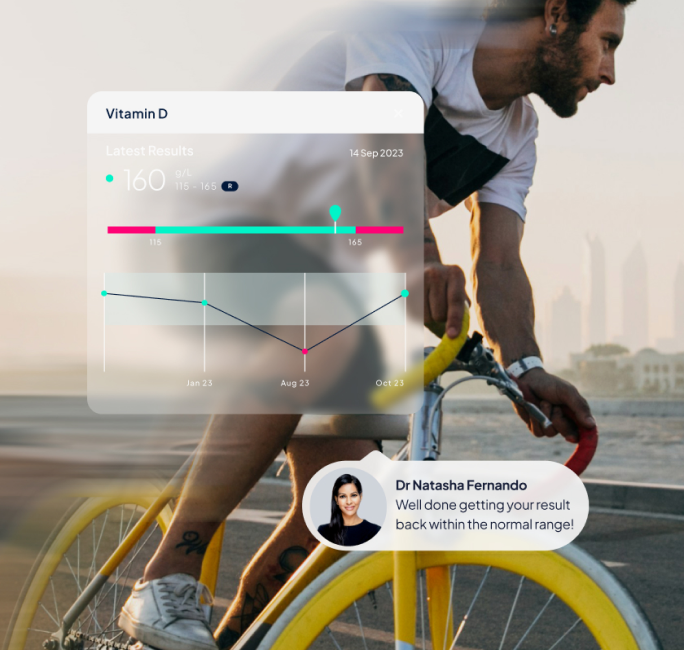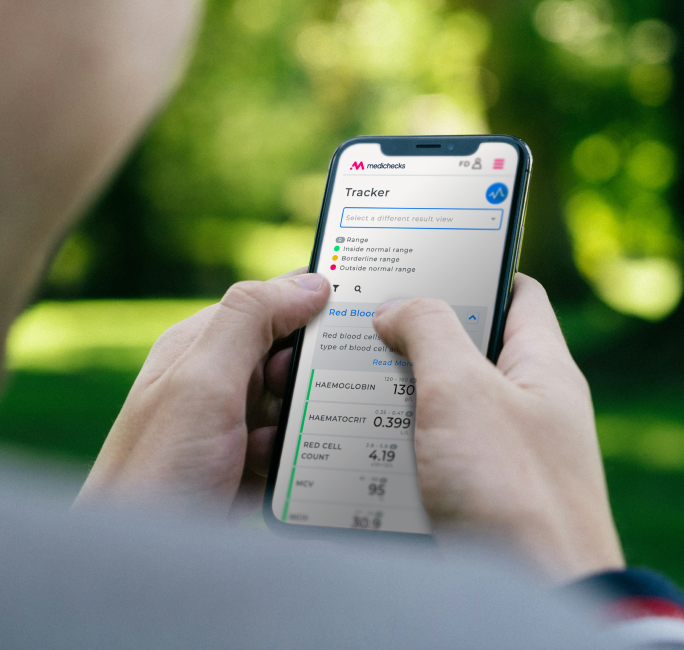If you're feeling constantly tired, weak, or lightheaded, this test checks key markers linked to anaemia and overall blood health. Low iron levels can lead to fatigue and poor oxygen circulation, while a full blood count (FBC) helps assess red and white blood cell levels for signs of anaemia, infection, or other conditions.

Go beyond the numbers
Get ready to elevate your health understanding with a personalised doctor's report. Go beyond results and tap into expert insights tailored just for you.
- Actionable advice
- Expert support
- Tailored recommendations

How it works
You have the flexibility to choose what works best for you. Enjoy the comfort of having a friendly nurse visit your home for a quick blood draw, opt for a convenient visit to one of our nationwide partner clinics, or self-arrange a draw at a location that suits you.
Take control of your health with Medichecks – order your blood test today!

Track, improve, and monitor your health over time.
MyMedichecks is your personal online dashboard where you can view your results, access clear and simple explanations about individual health markers, monitor changes in your health, and securely store information about your medical history, lifestyle and vital statistics.
What's in the test?
Clotting status
Platelet count
Learn more
MPV
Learn more
Iron status
Iron
Learn more
TIBC
Learn more
Transferrin saturation
Learn more
Ferritin
Learn more
UIBC
Learn more
Red blood cells
Haemoglobin
Learn more
Haematocrit
Learn more
Red cell count
Learn more
MCV
Learn more
MCH
Learn more
MCHC
Learn more
RDW
Learn more
White blood cells
White cell count
Learn more
Neutrophils
Learn more
Lymphocytes
Learn more
Monocytes
Learn more
Eosinophils
Learn more
Basophils
Learn more
How to prepare for your test
Prepare for your Iron and FBC Blood Test by following these instructions. Take this test when any symptoms of short-term illness have settled. Do not take biotin supplements for two days before this test, discuss this with your doctor if it is prescribed.




